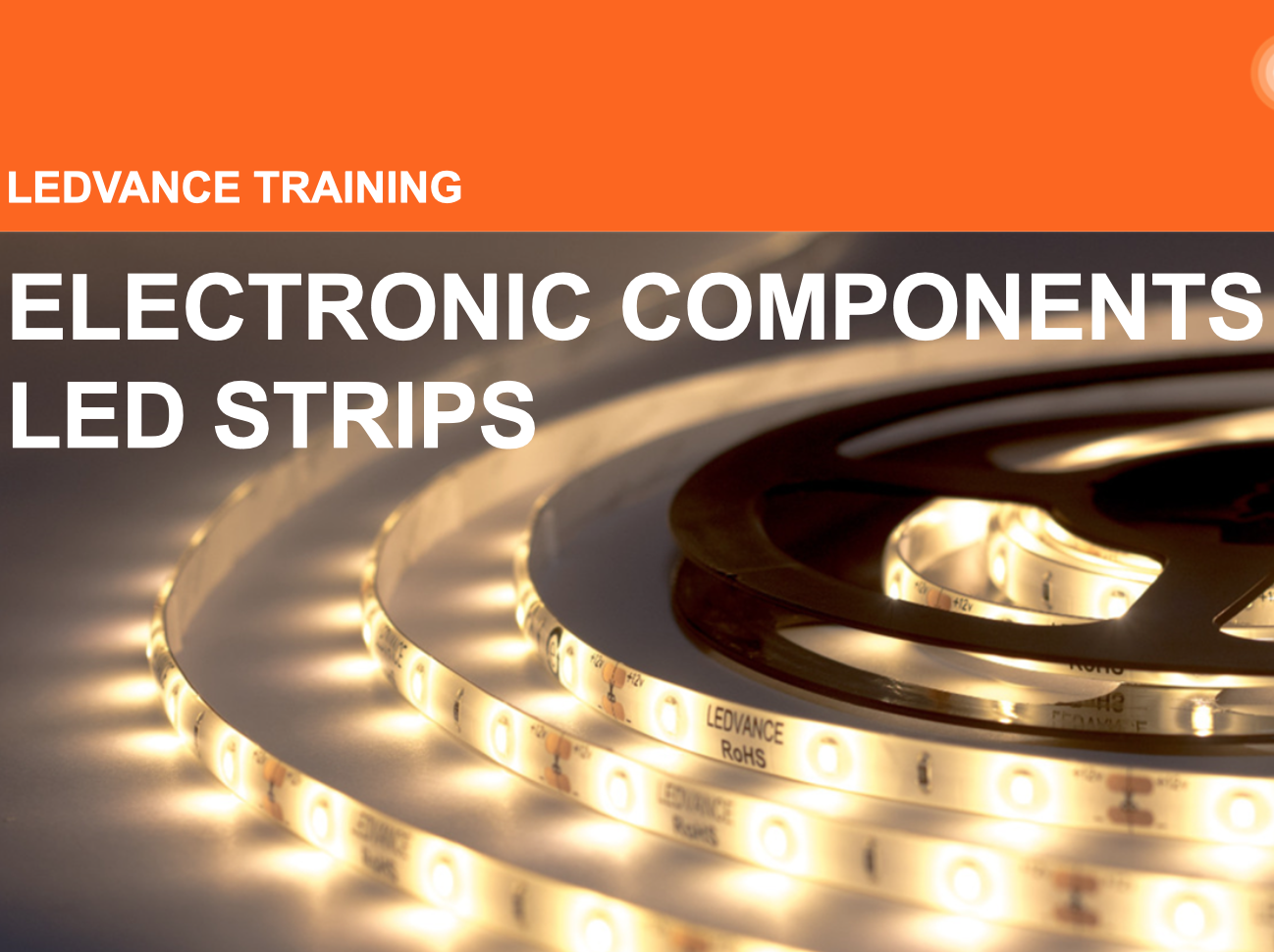Learn more about electronic components, i.e. LED strips. See how LED strips work and find out what the difference is between ASIC and resistor control, as well as what the different approval marks mean.
Are you familiar with the Ledvance Training Centre? The online platform offers bite-sized training videos on a variety of lighting topics, such as technology, products and applications, making it a fantastic source of information for anyone interested in pursuing a career in lighting.
The training videos all come in at less than 25 minutes, with most taking around 10-15 minutes to complete, so they’re perfect to fit in around your apprenticeship. You can even dip in and out of the modules, picking up where you left off, if you’re short on time. Certificates are available upon completion to keep track of your progress.
One module, Electronic Components: LED Strips, introduces you to LED strips, a must in every creative lighting solution. It explains how LED strips work, the difference between ASIC and resistor control, and what the various approval marks mean.
The presentation, which takes just 12 minutes to complete, is split into the following sections:
- – Linear flex / linear rigid / round shape module
- – How does an LED strip work?
- – ASIC or resistor controlled products
- – Flex configurator
- – LED strip marking
The video starts with an introduction to LED strip, which opens up a wide range of applications; brightness ranges from less than 300 lm/m for ambient light to over 2,000 lm/m for applications in general lighting.
It introduces three LED modules – linear flex, linear rigid and round module – before explaining how an LED strip works, with a look at its components, including the printed circuit board (PCB) which can be rigid or flexible, cutting areas (to reduce the length according to your needs), LEDs and the component to control the current.
The video then discusses LED strip regulation. There are two ways of controlling the current of an LED strip – ASIC (application specific integrated circuit) controlled and resistor controlled. One controls current through the entire reel length, while the other controls the current limitation at each single cuttable LED segment. The pros and cons of each method are explored.
Next, the flex configurator is introduced. As the range of LED strips and possible combinations of drivers and accessories is huge, LEDVANCE provides a handy LED Strip System Configurator to find the right combination for your lighting system. The video shows you where to find this.
A comparison of LEDVANCE LED strip in series and in parallel is given and LED round shape modules are discussed in relation to the so-called LEDification trend and upgrading of traditional HID fixtures.
Finally, dedicated LED strip marking is covered, with an explanation of each symbol, including those used to indicate indoor use only, dimmable, compliance symbols and more. LEDVANCE LED strip approval marks are also explained.
Why not check out the other modules available on the platform? Visit the Ledvance Training Centre here to view the full list of training videos available. It takes just a minute to set up an account and then you’re free to explore the colourful world of light!






